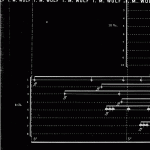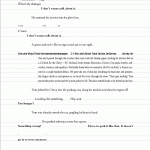T. M. Wolf is the author of Sound, which will be published by Faber & Faber in April. He is twenty-nine, grew up on the New Jersey Shore, and he has written for a variety of music publications, particularly on hip-hop. He recently graduated from Yale Law School. You can follow him on Twitter @tom_tm_wolf.
You have a tremendous academic record and this is something of a departure from your studies. How and why did you come to write this novel?
When I was in the early stages of writing Sound (2005 to 2008), I was bouncing around a lot, basically moving from one school and one academic program to the next. I was working very hard trying to “find” something (I’m still not quite sure what) and learning a lot, but I still felt like I was missing something (again, I’m not sure exactly what). At the time—and I still think this is true—fiction seemed like a more versatile, and maybe more productive, way to explore ideas that my academic work kept kicking up but that academic methods didn’t seem flexible enough to address. These were all questions of experience, I guess: what it feels like to be human, how our minds work, how we relate to other people, what it’s like to be answer-oriented in a world that’s chaotic and doesn’t yield answers all that readily.
I’m pretty convinced that there are about as many ways of writing and thinking about things as there are things to think and write about; fiction just seems to give me another way of thinking and writing. It’s not the ultimate way; it’s just one. But it can help me get closer to things that otherwise would be totally beyond my reach. I’m still not always able to grab these things, but I can get closer.
Even if fiction is an alternative to academic approaches to questions, it would have been hard for me to come up with the ideas for Sound if I hadn’t studied the pragmatists or the Frankfurt School, or if I’d never read W. E. B. DuBois’s Souls of Black Folk or Alasdair Gray’s 1982, Janine, or if I’d never been asked to do transect walks of city neighborhoods. All of those things have influenced what I think it is important to talk about and how I think we can talk about it: you are, in no small part, what you read and study and write about. So while Sound might be different in mode from a lot of the other things I’ve done in the past, it’s rooted in all those things, too.
The story has a unique design. Why did you write the book in that style?
Initially, the form just seemed like an interesting idea. I’d been rushing through a stationery store, trying to pick up a new notebook for course notes right before class, when I saw a small composer’s notebook filled with blank sheets of staff paper. It looked cool, so I bought it and tucked it away. I then went to class—a lecture course on postmodern theory and literature, somewhat ironically—and started taking notes. But somewhere in the middle of the lecture, the basic idea—using a musical form to illustrate things happening simultaneously—started spooling out in the back of my head. After that morning, I was hooked.
The form has its obvious limits—and others I’m sure I don’t understand right now—but it’s helped me get closer to things I like to see fiction do and would like to see fiction do more of: delve into the nitty-gritty of how we put thoughts together; square up to the fact that we frequently think multiple, contradictory things at once; capture more of the liveliness and volume of life; build out the expressive potential of form. Plus, I’m obsessed with music, so anything that helps draw music and writing together is something I’m down for.
Also, I’d be remiss if I didn’t note that the final product you’re reading isn’t something that sprang completely from my own head. The manuscript for Sound was written in landscape in an old version of Microsoft Word and it wasn’t particularly pretty (to put it nicely). I had abstract ideas for how the finished version should look, but Jeff Clark from Quemadura was the one who figured out how make the ratty manuscript into a real book—which, if you’ve seen the manuscript, was not an easy task (trust me on this one). Jeff, for his part, would probably credit Wu-Tang’s 36 Chambers and Avital Ronell’s The Telephone Book for inspiration, but that’s just hearsay.
Since you brought up music, how did that shape the book?
Okay, the first thing you need to know about me is that I listen to music constantly. Mainly hip-hop and soul, although my listening has spread out and gotten more catholic over time. Music’s been fundamental to how I think about and experience things, so of course it’s going to bleed heavily into my writing.
While I was working on Sound, I envisioned it as a kind of hip-hop novel. I say “hip-hop” not in the sense that the book was going to try to translate stories from hip-hop songs into fiction, or that it was going to present a story through rhyme, but rather that it was going to take its formal cues from hip-hop compositional approaches: I wanted the book to have layers; I wanted those layers to be bassed-up, to have a lot activity beneath the vocal surface that would punch through that surface; I wanted to mix harmony and dissonance; I wanted it to have flow; and I wanted it to loop, basically taking earlier parts of itself, remixing them, and spitting them out again. That’s what the producers I admire—RZA, Premier, Pete Rock, J Dilla—do and what makes their music so powerful to me. I think you can see those ideas not just in the “multitracking” (the portions of layered dialogue, thought, and sound that are written on the gray-lined sections of the book) or in the lyric samples but also in the mix of multitracking and more standard prose passages, as well as in the way that the plot plays out. You can be the judge of whether I succeeded in doing that, but that was one of the big ideas behind the book.
As I built the book out, I also became interested in music notation more generally as a kind of form. Cambridge has a great music library, and that’s where I was able to see Krzysztof Penderecki’s and Earle Brown’s work for the first time. That’s also where I dredged up John Cage’s Notations, which is a really interesting collection of unconventional compositions he collected in the 1960s from composer friends of his. All those things influenced my understanding of how I could deploy words on the page.
The location is so much a part of Sound. Would you consider the Jersey Shore another character?
Initially at least, I think the attention to setting in the proto-versions of Sound was prompted by homesickness. Although I got the formal idea for Sound while I was still in college in the U.S., I started developing the story itself while I was living in the U.K. I enjoyed my time there, and the time I spent traveling other places, but there was something comforting about going back to my apartment at night and trying to write about home. Over time, as I understood better where the story needed to go, it seemed only right to give the Shore itself more of a role: it grows and changes over the course of the story, looping back through its past in a lot of the same ways that Cincy picks through his childhood, shambling forward in the same ways he does, with all that baggage and without much of a sense of where it’s headed. The Shore, in the book, is also something I created rather than found, strictly speaking. There isn’t a city exactly like the one in Sound at the Shore; it’s a geographic and historical remix of a lot of different places that either exist today or did exist within the last hundred or hundred and fifty years.
Obligated to ask—what do you think of the show?
I won’t lie—those establishing shots of Seaside Heights give me a thrill every time I watch Jersey Shore. That’s my boardwalk! And the show can have its moments, whether you’re ironically into it or genuinely into it (or both). But I lament the really narrow view of the Jersey Shore you get from watching the show: things are simultaneously more complicated and more beautiful down there than the show lets on. And, at the risk of coming off like a real homey, I’d say the Shore is one of the more interesting parts of the country (I mean, it’s not like I’ve traveled all over the country, but I’ve been places and seen things): there’s a mix of old small cities, capital S suburbs, farms, and seashore resorts, great old architecture, and lots of different kinds of people. It’s not New York City, but I think we should be thankful for that. (Sorry, that’s my obligatory shot at New York. It’s part of the Jersey Code.)
What have you been listening to recently?
My listening’s been all over the place recently, but here’s a sample of songs (new and old) that have been crowding onto my playlists:
Elzhi, “Detroit State of Mind” (from the Elmatic mixtape): It’s really hard to improve on Nas’s “N.Y. State of Mind,” but Elzhi came pretty close. It probably helps that he’s a total machine: his rhyme patterns are (and have long been) about as complex as they can get while still having flow. He also manages to pack a ton of descriptive detail into just a few bars (“Many are stressed / Off the Henny or stress / Maybe b’cause the city’s built above where Indians rest / In peace / Police found deceased / It’s hair-raising like Kelis / D-boys, high and workin’ their fleece / Or bubble geese.”)
Gravediggaz, “Nowhere to Run, Nowhere to Hide” (from 6 Feet Deep): This popped up on my iPod for a few days while I was walking across the New Haven Green. I couldn’t believe I’d completely forgotten about it. The energy the MCs bring to this track is incredible; it’s like the exact opposite of the tranq’d-out styles that seem to have become more popular over the past few years and even fresher for it.
Battles, “Africastle”: I’m a sucker for syncretic music like this, stuff that doesn’t have one clear stylistic touchstone and just jumps out of the speakers with tons of ideas and styles. This album has been kind of hard for me to process, but it’s been fun to tackle (to the extent you can do that with your ears).
Harold Melvin and The Blue Notes, “You Know How to Make Me Feel So Good” (featuring Sharon Paige): There are few things better on a cold winter day than some airy, expansive, beautiful classic soul. Do yourself a favor and just listen. You can thank me later.
Curren$y X Alchemist, “Blood Sweat and Gears” (featuring Fiend, from the Covert Coup mixtape): Over the past two years or so, I’ve had some album or mixtape by Curren$y on repeat. Every time I think he’d benefit from some time off, he drops a project like Covert Coup that’s basically an end-to-end five-star album. Alchemist’s darker, knottier production seemed to bring out a little more aggression than I’m used to hearing from Curren$y. Meanwhile, Fiend stepped up and dropped a bluesy, morose verse that’s been stuck in my head for months.
See Also:
A Spotify playist of the music mentioned above, plus tracks by J Dilla, Gang Starr, and more.


